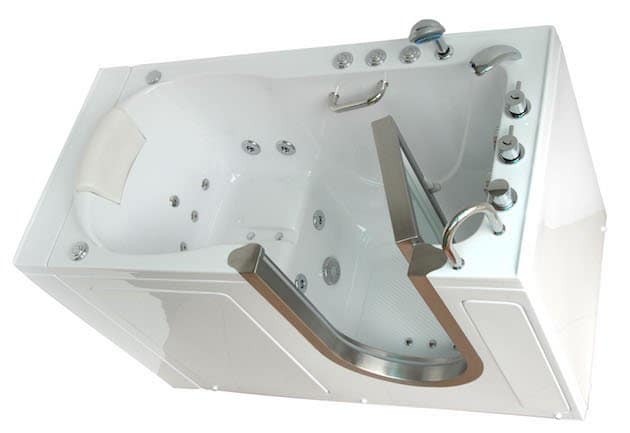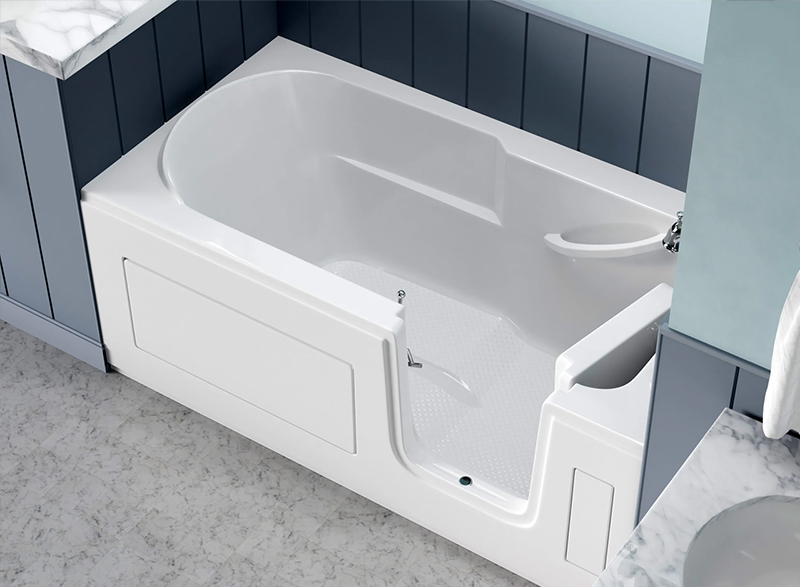Featured
Table of Contents
- – Extra Walk In Tub Fitting Company Costs In Lin...
- – What's Included In An Walk In Tub Fitting Quot...
- – Additional Walk In Tub Installation Company S...
- – DIY Vs. Professional: Walk In Tub Fitting In ...
- – What Affects Walk In Tub Installation Service...
- – Lincoln, NE Walk In Tub Fitting Company Budg...
- – Typical Walk In Tub Fitting Service Costs In...
- – Lincoln, NE Walk In Tub Fitting: Affordable ...
- – Lincoln, NE Walk In Tub Installation Company...
- – Lincoln, NE Walk In Tub Install Pricing Models
- – Lincoln, NE Walk In Tub Installation Payment...
- – Special Offers On Walk In Tub Fitting Compan...
- – Lincoln, NE Walk In Tub Installation Company...
- – Finding Budget Walk In Tub Fitting Company I...
- – Lincoln, NE Walk In Tub Installation Evaluat...
- – Refurbished Walk In Tub Fitting Service Pric...
- – Indoor Walk In Tub Installation Service Cost...
- – Lincoln, NE Walk In Tub Fitting Company: Pri...
The door will not open once again up until the tub is entirely drained. These doors can be found in two choices-inward and outward-opening. Outward-opening doors are becoming more common due to the fact that they provide the most accessibility. They allow the user to go into and exit the tub comfortably, without the door swinging into the area in the tub the user occupies. For numerous years, inward-opening doors were the standard and are still offered from many business. Costs for both designs have a wide variety and heavy overlap. Many business use designs with doors operating in both instructions and no distinction in expense. Other companies just produce one type of door requirement and charge a premium for the other. By opening into the tub and swinging inward, this type of door is more practical for smaller sized restrooms. In addition to conserving area, these doors are leak-proof as the pressure from a tub loaded with water keeps the door shut tightly. These doors feature a lock to stop unexpected opening. Something to remember with inward doors is that it may be slightly more challenging to walk around the tub when the door is open, and while it is opening, making it harder for limited-mobility users. Lots of makers are making outward-opening doors as basic choices. It is simpler to browse inside the tub with a door that opens outside. Outward doors utilize sensors rather than pressure to figure out if there is water still in the tub, so.
Extra Walk In Tub Fitting Company Costs In Lincoln, NE: What To Watch For
they do closed before the water is gone. Another consideration with outward opening doors is that the door's swing might hinder the toilet, cabinet, sink, or other parts of the space, but this depends upon your restroom layout. Normal door shapes include the U, S, and L configurations.
What's Included In An Walk In Tub Fitting Quote In Lincoln, NE
A few of these are visual, with the U shape being the most common because it uses up the least quantity of space. S shapes also use up little room and enable more moverability. If you need more room to enter and leave the tub, an L shape can be a good option due to the fact that this door is broader. If you require a wider door, you will likely require to increase your tub size.
Additional Walk In Tub Installation Company Service Plans In Lincoln, NE
U-shape walk-in tubs may have inward or outward-opening doors. Some business that make elegant doors made of glass or metal use the U shape on most of their tubs. S-shape tubs are larger at.
DIY Vs. Professional: Walk In Tub Fitting In Lincoln, NE
the top than at the bottom, making them a good choice excellent tub/shower combinations.
What Affects Walk In Tub Installation Service Costs In Lincoln, NE
A few of the bigger walk-in tubs available on the marketplace have a door that is available in a bigger L shape. This shape makes the base of the opening broader than the S and enables more space on top. The larger area makes it much easier for the caretaker to access the tub for help and makes the experience more comfortable. These doors can open inward or external, depending upon the brand model. Like all tubs, walk-in tubs can be set up in a number of different places, depending on the bathroom layout and the very best position plumbing-wise. For remodels and brand-new building and construction, you can have many other choices for tub setup, including as an alcove in between two walls,
Lincoln, NE Walk In Tub Fitting Company Budget Tips

in a corner beside two next to, against a versus wall, or freestanding in the. An alcove tub is the most typical, as it fits into a designated area in between restroom walls and is surrounded on 3 sides. Left-side and right-side tubs enable you to install plumbing from 2 sides, which offers some versatility however not as much as an alcove. Freestanding tubs.
Typical Walk In Tub Fitting Service Costs In Lincoln, NE
need to have plumbing originated from the floor or ceiling. This can increase the installation cost but makes a more modern-day declaration. You can add a number of functions to the base design to make your tub more comfy or beneficial for your circumstances. They can have a range of costs if you add these functions, depending on how many you include at a time and what tub you include them to.
Lincoln, NE Walk In Tub Fitting: Affordable Solutions
Walk-in tubs can likewise be used with the exact same features as a basic tub. The user should enter the tub and wait for the water to fill before the bath since the door can just be opened when the tub is empty. Other tubs are created to be utilized solely as tubs, so unless you have a separate shower, you will be replacing the shower with the tub.
Lincoln, NE Walk In Tub Installation Company Maintenance Fees
The majority of the time, walk-in tubs are not thought about resilient medical devices. This suggests that while they might assist you in bathing more quickly than in a basic tub, they are not designed to deal with or support a medical condition. For this reason, Medicare will not cover the expense or setup of a walk-in tub.
Lincoln, NE Walk In Tub Install Pricing Models
Your physician should document why the tub advantages your condition and submit the evidence to Medicare for this to occur. If they authorize it, they can reimburse you for partial or overall costs. When acquiring a walk-in tub for medical security factors, indicating you did not have such a tub, you could not securely shower yourself, or someone you are a caretaker for, you can deduct the expense of the tub from your taxes.
Lincoln, NE Walk In Tub Installation Payment Plans

You require to offer evidence to be qualified for these tax deductions and credits. This evidence must can be found in the type of paperwork from a medical supplier as to the reason for the need and invoices for the purchase and install. In some cases, you might require extra documentation about the setup from your plumbing professional.
Special Offers On Walk In Tub Fitting Company In Lincoln, NE
Walk-in tubs need somewhat more upkeep than other tubs however not an extreme amount more. Suggests cleaning up the walls and flooring of a walk-in tub of soap, oils, shampoo and any other residue.
Lincoln, NE Walk In Tub Installation Company Honest Pricing
Many producers offer great warranty policies, however the specifics of each policy can vary from one brand to the next. Make certain to have a look at the warranty beforehand before buying a walk-in tub and look for one with the longest possible coverage. Preferably, you wish to discover a manufacturer that offers lifetime protection for the door seal, as this can deteriorate and begin to leakage over time, so might need to be changed after numerous years of use.
Finding Budget Walk In Tub Fitting Company In Lincoln, NE
If you observe cracks, leaks, or other concerns, stop right away and call the manufacturer for suggestions. If you plan on tiling the tub into the surround, request a tile flange to be included in the tub. This flange enables a leak-proof installation of the tile to the tub.
Lincoln, NE Walk In Tub Installation Evaluation Costs
Neck rests may be readily available as an add-on product for some tubs, with expenses beginning at around. Neck rests extend the back of the tub to allow you to comfortably lean back with your head supported. With or without a neck rest, you must not use the tub if you can not stay up straight to keep your head above the water.
Refurbished Walk In Tub Fitting Service Prices In Lincoln, NE
This surround can help safeguard the walls from splashes and water or enable you to transform the tub to a shower. walk in tub installation. Surround costs start at and go as high as, depending upon the material. Before the tub can be filled, the user must go into and sit down with the door closed
Indoor Walk In Tub Installation Service Costs In Lincoln, NE
While these tubs are walk-in, they do not have a no barrier to entry. Entry to the tub is around 6 inches on average, but some designs may use a lower entry of around 4 inches at no additional expense.
Lincoln, NE Walk In Tub Fitting Company: Price Vs. Quality
Due to the fact that walk-in tubs are often a specialty item, many people who offer them likewise use setup. Not all offer this service, so be sure to examine (walk in tub installer). Most tubs with a mechanical feature, such as jets or air, require some upkeep, such as running the jets with specialty cleaners that cost around
Table of Contents
- – Extra Walk In Tub Fitting Company Costs In Lin...
- – What's Included In An Walk In Tub Fitting Quot...
- – Additional Walk In Tub Installation Company S...
- – DIY Vs. Professional: Walk In Tub Fitting In ...
- – What Affects Walk In Tub Installation Service...
- – Lincoln, NE Walk In Tub Fitting Company Budg...
- – Typical Walk In Tub Fitting Service Costs In...
- – Lincoln, NE Walk In Tub Fitting: Affordable ...
- – Lincoln, NE Walk In Tub Installation Company...
- – Lincoln, NE Walk In Tub Install Pricing Models
- – Lincoln, NE Walk In Tub Installation Payment...
- – Special Offers On Walk In Tub Fitting Compan...
- – Lincoln, NE Walk In Tub Installation Company...
- – Finding Budget Walk In Tub Fitting Company I...
- – Lincoln, NE Walk In Tub Installation Evaluat...
- – Refurbished Walk In Tub Fitting Service Pric...
- – Indoor Walk In Tub Installation Service Cost...
- – Lincoln, NE Walk In Tub Fitting Company: Pri...
Latest Posts
Glasgow, KY Walk In Tub Fitting Common Questions
Kingston, RI Walk In Tub Installer Pricing FAQ
Staten Island, NY Walk In Tub Installer: Questions To Ask
More
Latest Posts
Glasgow, KY Walk In Tub Fitting Common Questions
Kingston, RI Walk In Tub Installer Pricing FAQ
Staten Island, NY Walk In Tub Installer: Questions To Ask